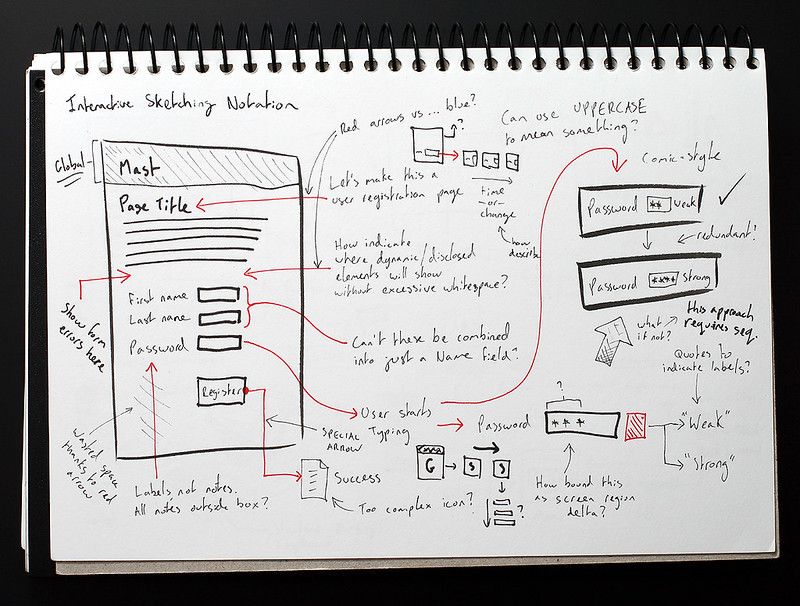Just How Important is User Experience?
In the digital world there is always a lot of focus on driving engagement and traffic. Companies focus on things like SEO, paid search, social media... but how important is user experience (UX) in this mix and how does it affect your results? In this article we look at:
-
How User Experience Creates Satisfied Customers
-
Why User Experience Must Be Driven by Data
-
The False Consensus Effect in User Experience
-
Testing Your User Experience
-
The Benefits of Nailing Your User Experience
Let’s assume you have your digital marketing down perfectly. But your brilliant campaign might be impacted by a poor user experience. To explain, let’s use an extreme example: You advertise a compelling product or service with a discount attached and when people click through it’s just a static image. There is no way of them purchasing the product. Frustrating… … annoying… … and it’s possible most of the visitors will never return. They might get on Facebook and tell their friends about their experience too. The more they can’t have it, the more they want it, the more frustrated they get. The more they shout, the more negative the experience and the fallout. Ok, it’s not realistic. You’d never advertise a product or service that couldn’t be purchased. So, let’s get grown up and use a real example…
User Experience - It's the Simple Things
Amazon increased its revenue by $300m by making one super simple change… They swapped the text on a call to action button from:
‘REGISTER’
to…
‘CONTINUE’
Why? Because the idea of registering was frustrating to a user at that point in the journey. Registration was made optional and ‘Continue’ made things a little more welcoming for the customer. The change was the brainchild of Jared M Spool, a renowned UX expert (should that be Ux-pert?) who has been working in the field of usability since the 1970s. He wrote: “We were wrong about the first-time shoppers. They did mind registering. They resented having to register when they encountered the page. As one shopper told us, ‘I’m not here to enter into a relationship. I just want to buy something.’ “Without even knowing what was involved in registration, all the users that clicked on the button did so with a sense of despair… repeat users weren’t any happier.” That simple change brought in $15m of revenue in the first month alone.
User Experience Creates Satisfied Customers
Your most effective marketing is free. Word of mouth, recommendations or referrals come from great customer experiences
Your continued success depends on how satisfied your customers are and the experiences they have with your brand. So, your digital interactions must be considered in the same way as the ones your customer experiences in a bricks and mortar store. A great user experience means thinking about a visitor’s actions, how they perceive your brand when they interact and how happy they are with the experience. But it’s not just your website that influences them. Other websites they visit have a huge impact too. Think about it from your own perspective. If you often use websites that put brilliant user experience up front, then you visit one that’s not so great, you’ve got an expectation gap. Your brand perception might not be whet you think it is. By having a focus on user experience you’re delivering satisfaction to your customers and results to your business. 
User Experience Driven by Data
User experience measures the quality of their experience when people visit your site and in turn the conversions or goals you want your site to achieve. A good experience drives more engagement and those good experiences get shared. It’s why it’s crucial for the interactions with your brand to be monitored and turned into real-life data you can use, to meet a customer’s expectations. Every interaction, that means those online and offline, should be monitored and analysed to give your business actionable insight into what your site visitors are doing when they visit your business. You need to understand their pains, their motivations and where they go and where they struggle. There really is a lot to be gained from investing in the user experience of your business. It prevents costly mistakes like...
The False Consensus Effect in User Experience
Don't be hard on yourself if the next few paragraphs resonate. Many businesses fall into this trap. They create a new product or service. And when it hits the market it fails or isn’t as well received as the company believed it would be. The assumption was that the world at large would love it as much as the company directors and executives love it. It’s what psychologists call the false consensus effect. It refers to the tendency of a person to overestimate just how much other people behave or think like you do. It’s an egocentric cognitive bias that makes people think that their way of thinking is the normal way of thinking. And it’s a major mistake. The good news is most businesses have made the mistake, including all the big ones (remember Cheetos lip balm and Google Glass?) If anything it's a sign of pushing boundaries and innovation. The key to understanding if a product or service will work is understanding your customers. It’s not what they think of your product, but you truly knowing their pain points and what they need or want in their lives. Check your assumptions because there will be some. Test the ones that will have the biggest effect on the product’s reception. And test as much as you can throughout the process.
Giving Your User Experience a High Five
The idea of testing user experience might fill you with dismay. It perhaps seems complicated, drawn out and will it really change a great deal? Remember, user experience is about the user, not what you believe the user is doing.
It’s guaranteed (and this applies to all your marketing) you’ll always be surprised when you test. You think a person will behave in one way, but often they won’t.
And getting back to the main point: it’s argued you only need five people to successfully test user experience online. It’s a rule that’s generally accepted. This rule of five came from a renowned UX specialist Jakob Nielsen. He suggested that if you have three customer segments you could take five people from each and test using multiple iterations. So, you take five people and test three or four times to get usable results. Although you may need to test in a different way depending on your circumstances.
- If you have numerous segments and don’t have capacity for multiple tests you might want to increase that to ten people and carry out two iterations of the test.
- For customer surveys and real-world studies, you would want to look at speaking to at least 15 people and maybe as many as 50. Understanding people’s issues in the real world is crucial.
Because every UX strategy should be based on data and fact, not guesswork, assumptions or opinion. 
Benefits of Nailing Your User Experience
When you solve a prospect’s pain points they become your customer. But how can you help someone, or share your expertise if they can’t get at the information they need? Through lack of time and just simply having to keep the wheels moving in a business it’s easy to become inwardly focused and lose sight of what the customer needs. By nailing your user experience your business really benefits:
- It allows you to know your customers better by understanding what they want to see, what they like and dislike, and...
- ... you can see how they use your site or app
- Reduce customer churn
- You can make changes before problems arise (and cost you business)
- You’ll find areas for product or service development
- You’ll have better relationships, which means more conversions
- Fixing a problem in development is cheaper than fixing it in design stage (and way cheaper than fixing it once it’s gone live)
Final Thoughts
The stats say that 70% off customers will abandon a basket because of a bad user experience. And 74% will return to your site if the experience is good. Remember too that you’re competing with other sites. Not just those in your industry either. We know this stuff because it’s what we do on a daily basis. And we have to make it work for us too, because our business isn’t alone in the digital universe. And if yours isn’t alone either, it might benefit you to get in touch.













